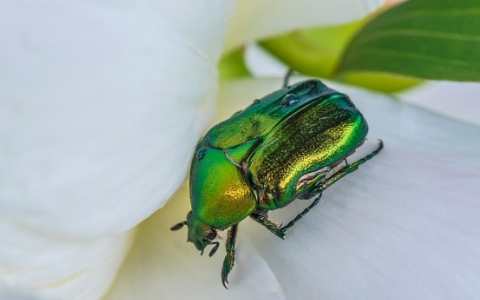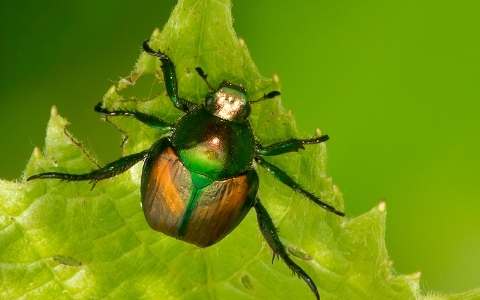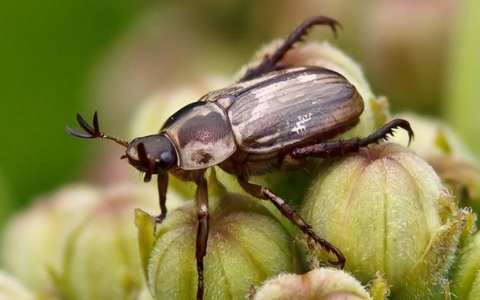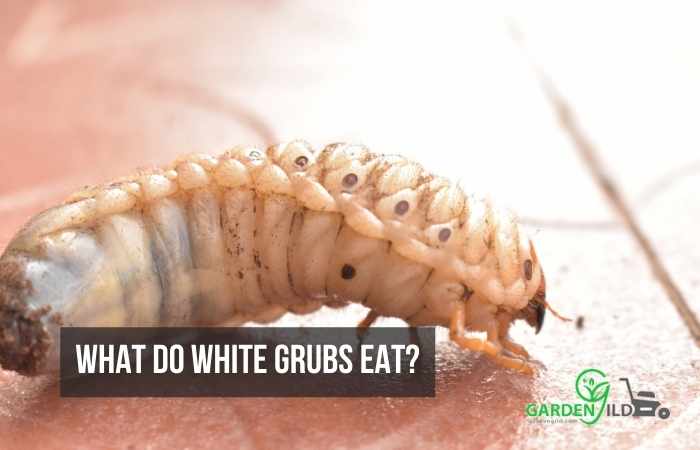Those peculiar-looking brown-headed insects that are white and with six fits love to crawl around the roots of your plants.
Their main job is to stay below the plants on your lawn and live by feeding on them. During this time, the ultimate result can be a patchy and damaged lawn.
And, they are known as the grub worms!
But, what are those weird and ugly-looking creatures! Are grub worms limited within this, or do any more intriguing parts of them remain?
Actually, at the end of the season, you can find some attractive-looking pests apprising on your lawn.
That means these beautiful creatures come from the grubs; therefore, do grub worms turn into June bugs?
Yes, grub worms in their mature state turn into June bugs. There are seven types of beetles found on the lawn. The immature stage of those beetles that remains inside the soil is grub worms. They turn into seven different beetles during the summer, among which June bugs are one of their categories.
In this garden gild guides we’ll discuss the following:
- Do grub worms become June bugs?
- What kind of bug does a grub worm turn into?
- When should I treat my June bug’s lawn?
- What Do White Grubs Eat?
- How to get rid of grubs organically?
- How do you kill grubs in October?
Let us get further!

Do grub worms become June bugs?
Almost all sorts of grubs turn into different kinds of scarab beetles. Among them, June bugs hold tight to their place.
Grubs are generally the immature form of this June bug. Grubs to bugs and bugs to grubs; they are just interconnected. Their cycle continues throughout the year.
Grubs can stay inside the soil for three consecutive years. But, this number is not fixed for every lawn grubs. Their immature state can vary from variety to variety.
The grubs are the white grubs, turfgrass, lawn grass, or just by fares. But, their functionality is all the same.
These lawn grubs are firstly generated from female beetles. When female beetles hatch eggs, the eggs turn into grubs. These grubs are larva and also look like them. After hatching the larva, they emerge into fares and then into a pupa.
When the pupa hits their maturity, the species turn into beetles, also known as the June bugs.
Also, hundreds of species of these June bugs can carry from your lawn to your lawn. But, most of them are not harmful and don’t impact any of the plants on your property.
The adult June bugs live by feeding on flowers. They also have foliage for their life. As a result, they are sometimes ending up damaging your lawn. But, the varieties which cause damage are so less in number.
The immature state of these June bugs is way more destructive than them. That is to say, while grubs that live underground can cause damages by several folds than those matured beetles.
Again, these grubs are ugly-looking that are present on your lawn. But when they grow up and turn into bugs, they become much handsome!
What kind of bug does a grub worm turn into?
Grub worn is present in different forms and types. So, they also turn up into several various matured beetles. Some of these are good, and some can harm your lawn and need to be eliminated.
Some cool beetles that a grub worm turns into are:
1. June beetles are green in color:

You can find the similarity in their naming but can’t match the characteristics with other beetles. That mainly goes for the one known as June beetles.
That is to say, green June beetles are so much different and grow on a regional basis.
The kind of beetles we are talking about now is in the USA, especially Texas and the west. And, the main thing by which they can be identified is their damaging properties.
So, yes, this variety of beetles have harmed your garden and all those desirable plants.
Again, people also identify them by their green and brownish textured color. So, by now, you can already spot many of the differences between them and the brown-colored June bugs.
Also, the immature state of these sorts of bugs, their larva, shows a different nature. Unlike all other grubs, the grubs of green June bugs crawl from underground to the ground surface.
Along with that, grubs of the green June bugs don’t even use their six feet during locomotion. Instead, they use their back for the crawling.
2. Japanese beetles:

The only way to spot this kind of beetle is by its beautiful color. Their head is composed of bright greenish color, and the body also tends to be the same.
Again, the wing covers of these beetles are brown.
You can also mark six white spots on their body that show their uniqueness. They grow up to half an inch longer.
Japanese beetles are more found in the United States of America rather than in Japan. Now, that can be a weird thing for you, but the reality about them is more bizarre. The Japanese beetles are known to be accidentally transported or imported into the USA.
As a result, every year, lots of them are found in the eastern United States along with the west and southern part as well.
Both the grubs and the beetle of this species are known to be harmful to your lawn. As a result, people need to take precautionary and preventive measures against them.
People use various techniques such as wasps that are beetle-eating, various bacterial diseases, etc., controlling them.
3. Oriental beetles:

Oriental battles are also a species that is accidentally imported to North America from Asia. As their name applies, you can relate the facts with them.
But, the best part of these beetles is that they are damage-free to your lawn! Isn’t it a matter of great news! Yes, until you find out their grubs are white and unfortunately bringing tons of damage to your yard every year.
As the matured parts of this species are not pests and don’t do any harm, they are not given proper importance to get rid of.
These beetles are found in black to brown colors and can also carry a mixture of them.
When should I treat my June bug’s lawn?
Their transformation from the immature state to a fully grown matured beetle is the same time you need to treat them.
June bugs are named after their characteristic of growing during June. They are also often found to increase during May. Once they grow into the June bugs, they hatch their eggs.
It would help if you took immediate action through the application of insecticides during this time. Would you please put them before hatching eggs?
As a result of the treatment, grubs cannot come out of the eggs, and further reproduction is stopped.
What Do White Grubs Eat?
As you know that they live underground, so they will also manage food inside the soil and have them for their sustenance.

Most of these species feed on plants. The parts of the plants available inside the ground are only roots for most of the cases. As a result, the grubs eat seeds for their survival.
The types of plants whose roots are mostly preferred by them are mostly pastures.
How to get rid of grubs organically?
The natural and the organic way to get rid of grubs is to apply Neem oil. The affected areas of your lawn should be treated with them that can effectively kill the grubs.
Again, Nematodes works very well to eliminate the grubs as they release bacteria in the soil that infects the grubs.
check out this video about how to get rid of grubs guaranteed (4 Easy Steps)
How do you kill grubs in October?
To treat the grubs in October or fall, use a chemical alternative as the best solution.
One of the best insecticides that you can find for this job is Trichlorfon. Make sure to rinse your lawn by half-inch of water during the application is this insecticide.
Again, don’t let anyone, including your pet, enter your lawn until adequately dry all the plants.
Read also:
Do grub worms turn into June bugs? Final thoughts
Grub worms turn into June bugs by natural phenomena. Whether a bug will be harmful to your garden and lawn will solely depend on its type and maturity stage.
